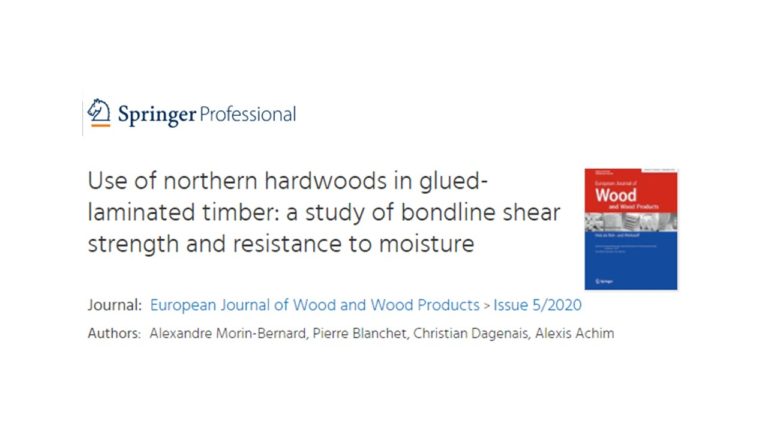Abstract
The growing demand for engineered wood products in the construction sector has resulted in the diversification of the
product offer. Used marginally in structural products in North America, northern hardwoods are now attracting a growing
interest from industry and policy makers because of their outstanding strength as well as their high availability and distinctive
appearance. Currently, there is no standard in Canada governing the use of hardwoods in the manufacturing of gluedlaminated
timber. As part of a larger project aiming to assemble the basic knowledge that would lead to such standard, the
specific objective of this study was to assess the shear strength in dry and wet conditions of assemblies made from different
hardwood species and structural adhesives. Results suggest that a mean shear strength as high as 20.5 MPa for white oak,
18.8 MPa for white ash and respectively 18.2 MPa and 17.4 MPa for yellow birch and paper birch can be obtained in dry
conditions. The choice of adhesive did not affect the dry shear strength of these specimens, but differences were observed in
wet conditions. Specimens bonded with melamine-formaldehyde adhesive had generally the highest wet shear strength and
wood failure values. These results also highlight the important influence of wood density on the percentage of failure that
occurs in wood and, to a lesser extent, on shear strength. Further investigations on finger joint strength and full-size bending
tests will allow confirming the potential for the investigated species to be used in glued-laminated timber.
Use of northern hardwoods in glued-laminated timber: a study of bondline shear strenght and resistance to moisture
25 juillet 2020


